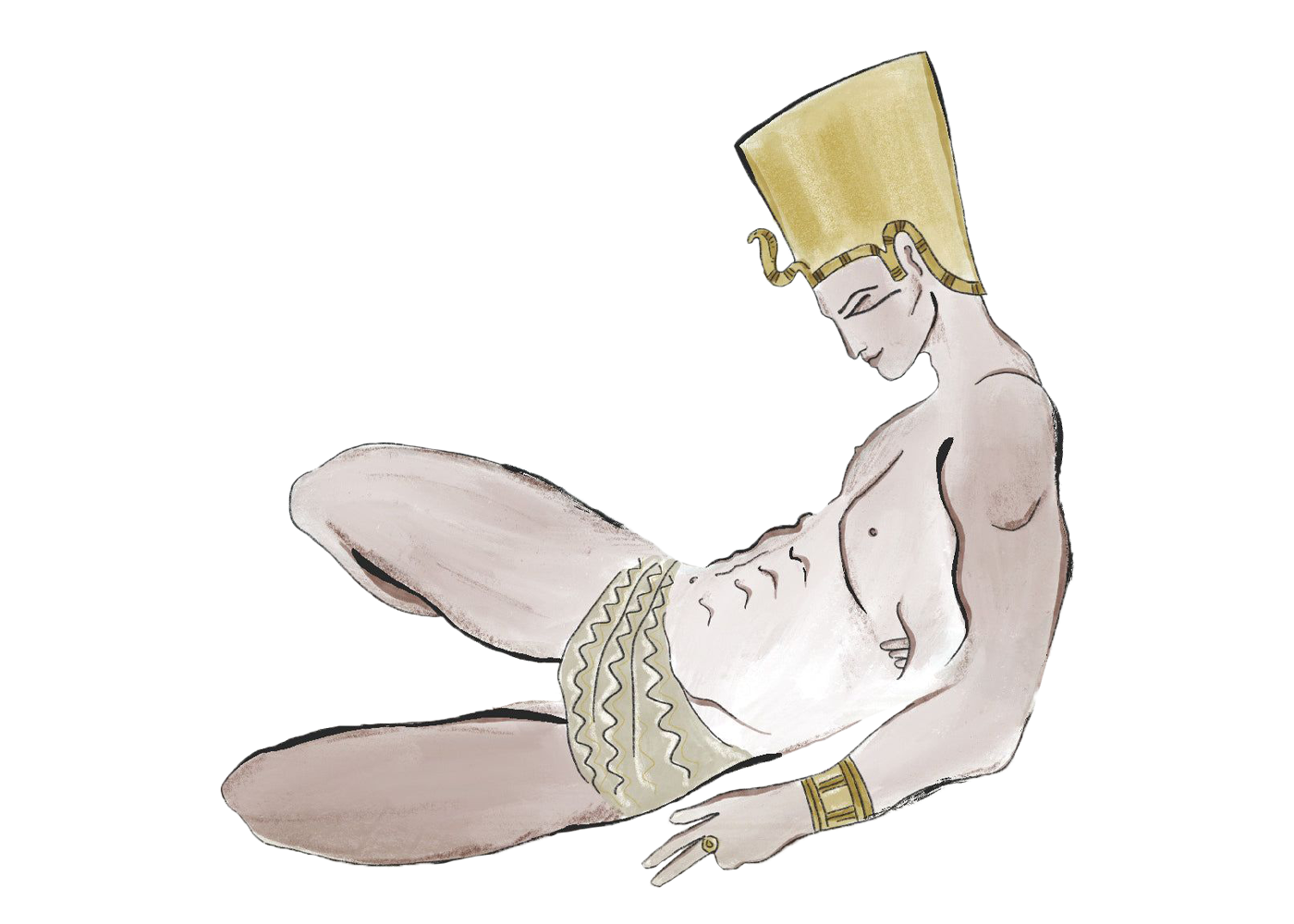NYMOS
LOUIS BARTHÉLEMY x STUDIO NYMOS
Handcrafted, gold pendants featuring ancient Egyptian iconography and figures of the Mediterranean mythology.



The palm tree : is synonymous with the lush gardens of ancient Egypt, offering a spot in the shade, along with fruits and peace.


The Blooming Lotus : The union of upper and lower Egypt. Circular like the sun, the design symbolizes creation and rebirth. At night, this remarkable flower closes and sinks underwater, at dawn it rises and opens again. So goes the cycle of life.


The Gazelle, admired for its speed and elegance. Often brought to Egypt though tribute or trade, this elegant animal was often kept as a pet in the pharaoh’s private gardens or gifted to foreign rulers.


The Serpent, inspired by Apophis, the ancient Egyptian deity who embodies chaos. The sinuous curves in his design speak to Apophis’ reputation as the opposite of light, order, and good.


A dreaming pharaoh at peace. He’s protected during his sleep by Wadjet, the serpent goddess. She’s depicted here as a cobra decorating his headpiece. Wadjet was the patroness of the Nile and a great protector of Egypt.


Enigmatic and mysterious, with beautiful sharp features. Akhenaton was the first pharaoh to introduce monotheism in Egypt. A stunning sculpture of his torso in the Louvre has inspired this drawing.


A mythological creature that fuses the body of a lion and the head of man. Sometimes characterized with wings, the sphinx symbolizes strength and wisdom and is usually seen standing guard above sacred tombs and temples.


An ephebe wearing a double crown. The headpiece symbolizes his reign over all Egypt, and the unification of its upper and lower kingdoms.


A young pharaoh flexing his arm. He’s wearing a gold crown and a pectoral jewelry piece, and we like to think of him as a ruler’s illicit paramour.


Inspired by the columns of ancient Egypt. This water lily shaped canopy refers to the beautiful, organic shapes of the Karnak temple in Luxor.


As an adolescent, Medusa was strikingly beautiful and destined for a life of pleasure. Fate led Medusa to defile Athena’s temple and consequently be transformed into a powerful force capable of stopping any man in his footsteps. The male interpretation of Medusa is both exalted and feared, capable of having his way with anyone he pleases. His serpent locks beckon to all, but can be tamed by none.


No god or mortal can evade Eros. He is a handsome and ambitious young man, never without his enchanting bow and arrow at the ready. He embodies love, athleticism, sexual power, and art, and is often regarded as the protector of homosexual love. A lover of spectacle, it has been said that his arrow was the cause of all the Trojan War.


The goddess of love; the one who rises from the sea. Because her beauty elicits jealousy and uncontrollable desire, she is seen as a threat to peace between gods.

 Often associated with wielding fury-laden thunder bolts atop Mount Olympus, Zeus is the king and protector of all Ancient Greece. He is revered and respected for his sheer power and commitment to justice. He is also an eternal romantic, lusting over gods and goddesses alike.
Often associated with wielding fury-laden thunder bolts atop Mount Olympus, Zeus is the king and protector of all Ancient Greece. He is revered and respected for his sheer power and commitment to justice. He is also an eternal romantic, lusting over gods and goddesses alike.

Dionysus represents the spontaneous and unrestrained aspects of human experience. Known as Eleutherios (the “liberator”), Dionysus produces euphoric states that free his followers from both the constraints of society and their own inhibitions. He is the god of wine and ecstasy, and is known for blurring the line between joy and brutal and blinding passion. One of his most notable traits is causing madness in men. Myth holds that drinking wine from Dionysus can cure any misfortune.
To purchase the collection or for more information, please visit www.nymos.co
